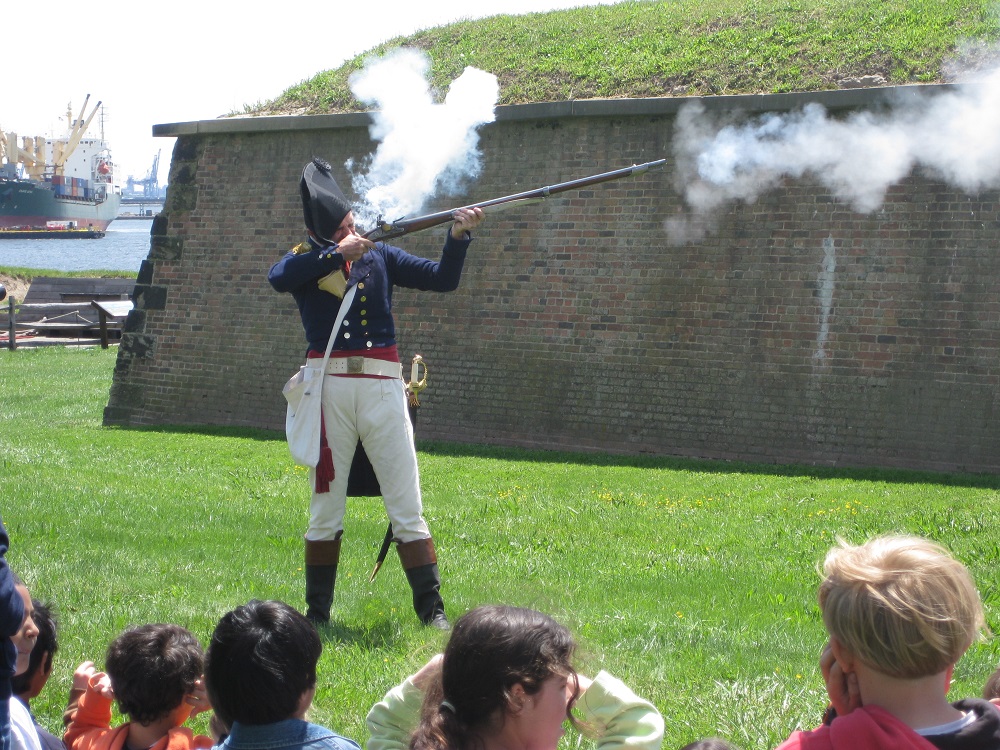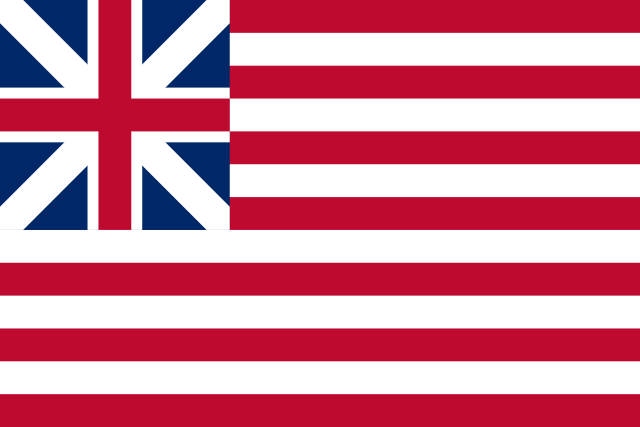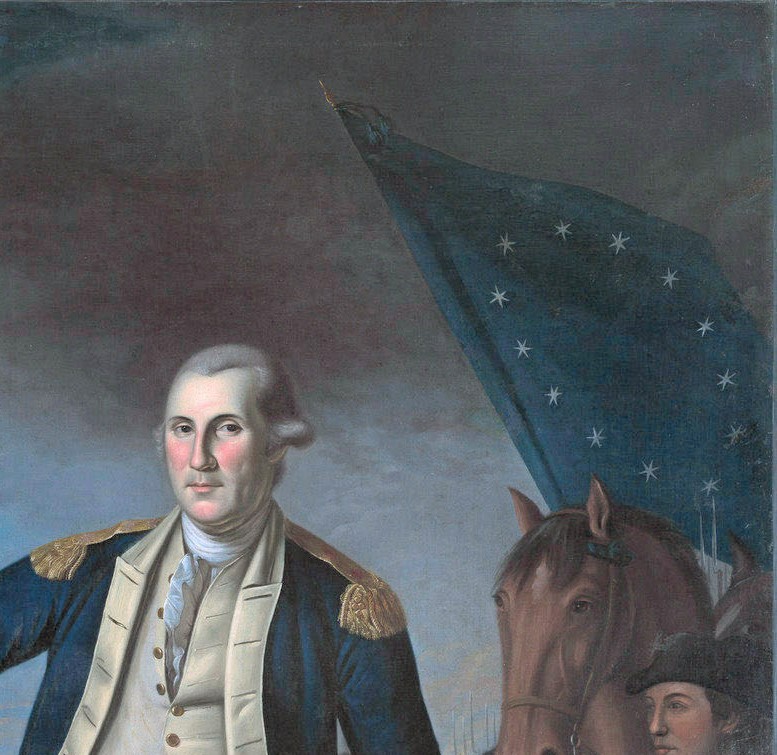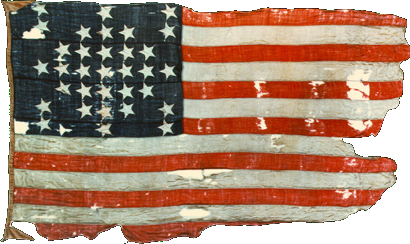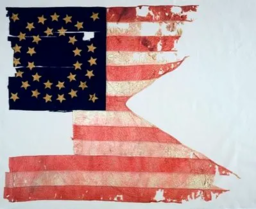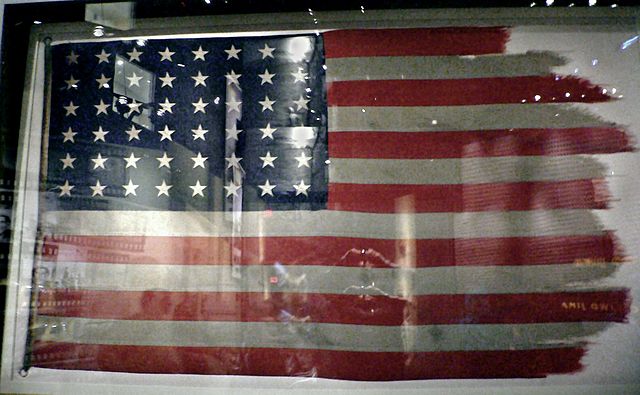The story of the American Flag begins when the rebellious colonists were still trying to figure out what to do about Great Britain. Along the way, it’s gone through a number of redesigns and artistic expressions until a firm design was finally mandated — in 1912!
I think every nation has a special place in its heart for its flag. I personally love flags and antiques – it’s like holding history in your hand – and I’m always on the hunt for flags and historic patriotic items!
Highlights
Sites to visit for American Flag History:
These sites are great to visit on their own, or you can plan a trip to see them all. Head south along I-95 from Philly down to Virginia and visit all four historic flag spots along the way! They’re only 175 miles apart!
1775: The Continental Colours
In the early stages of the American Revolution, it wasn’t clear if the colonies were fighting for more autonomy or a total break from Great Britain. Given this, it isn’t too surprising that the first Colonial flag incorporated the British flag.
The Union Flag of Great Britain itself is a compilation of flags from two of the nations that made up Great Britain at the time: England’s red cross of St. George and Scotland’s white “X” of St. Andrew; overlaid on a blue background. Wales wasn’t represented (and still isn’t) and Ireland’s red “X” of St. Patrick wasn’t added until the early 1800s.
Displaying Great Britain’s Union Flag in the upper left corner, the “Continental Colours”, also known as the Grand Union, includes the red and white stripes representing the 13 colonies that we still use today.
The flag was made in Philadelphia and is believed to have first been flown by John Paul Jones (“I have not yet begun to fight!“) in December 1775.
Adoption of the flag spread quickly. By April 1776 North Carolina issued a bank note with the design on it.
June 14, 1777: A Flag is Born (kind of)
Once the Declaration of Independence was made, a flag that referenced Great Britain was no longer acceptable. A new flag was needed.
Philadelphia was the capital of the budding nation, so it was there that the “Flag Resolution” of 1777 was made. A very simple statement, the resolution stated that the flag would consist of 13 alternating red and white stripes and a blue field with 13 white stars.

No clarification was given as to how the stars would be arranged, what the size of the flag would be or other details. As a result, flag makers created a wide variety of designs and patterns.
Other variants also emerged, some without any stripes, as depicted in the 1779 painting “George Washington at the Battle of Princeton” by Charles Wilson Peale.
Perhaps the most famous version is the “Betsy Ross” flag with the stars arranged in a circle.

Waving Betsy Ross' Flag Higher
Elizabeth Griscom was born in Philadelphia in 1752. She was trained in needlepoint and upholstery and had a small shop in Philadelphia. With this shop, she supported her family while her husbands (she was widowed twice) were fighting in the Revolution. Her first husband was John Ross, which is where her most famous last name comes from.
According to the legend, George Washington went to her shop with a sketch of a 13-Star flag using 6 pointed stars. Ross recommended using a 5-point star instead since that could be more easily cut from folded fabric. Washington consented to the change and left her to complete the flag.
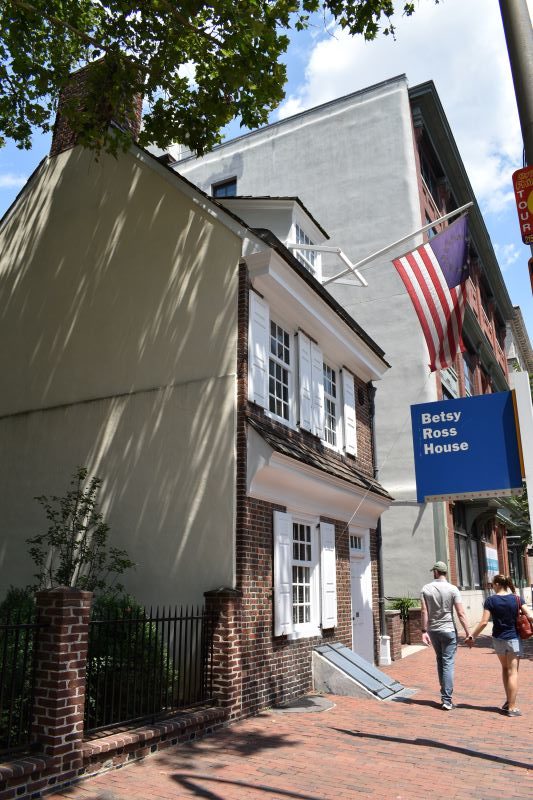
You can tour the house Betsy lived in. It’s a tight squeeze through winding staircases but still neat to see how people lived in the 18th century.
There are no official documents which confirm the tale. Schuyler Hamilton, grandson of Alexander Hamilton, published the first book tracing the history of the flag in 1853. He made no mention of Ross’ involvement, which doesn’t necessarily mean it didn’t happen. Later books and affidavits signed by Ross’ daughter, granddaughter and niece, claim the tale is true. No matter how it came to be, the tale of Betsy Ross and her iconic American Flag endures today.
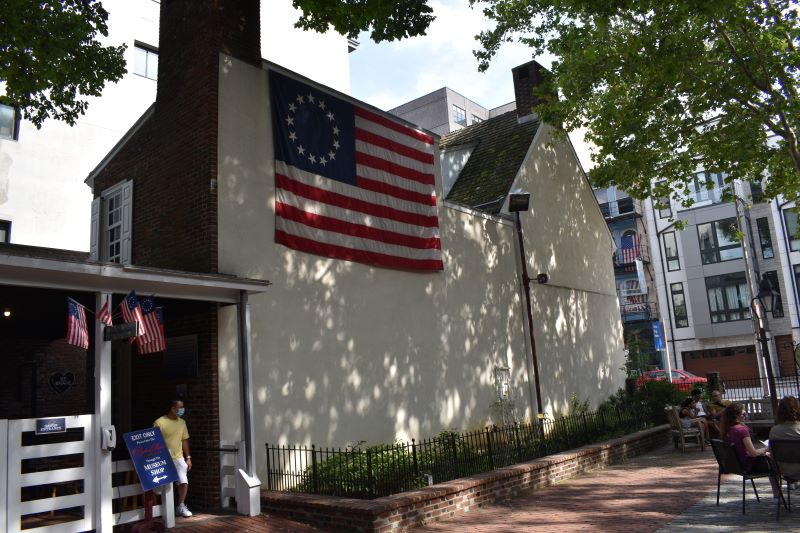
American Flag History: Official vs Unofficial Flags
Following the first Flag Resolution of 1777, two additional legislative acts defined rules for what could be considered an “official” American flag. Regardless if a flag is official or not, it is still considered a legal flag of the United States and is due the same respect as the current official flag no matter the design.
Following the Revolution, Vermont became a state in 1791 and Kentucky followed in 1792. There was hot debate about whether or not the official US flag should be updated. Many argued that the flag should be a fixed design with 13 stars and not change when new states were added.
Nations generally don’t change their flag design regularly, and some felt the newly formed United States should have a fixed flag to show its permanence in the world. Others had a financial motive, as buying new flags whenever a new design came out could get expensive.
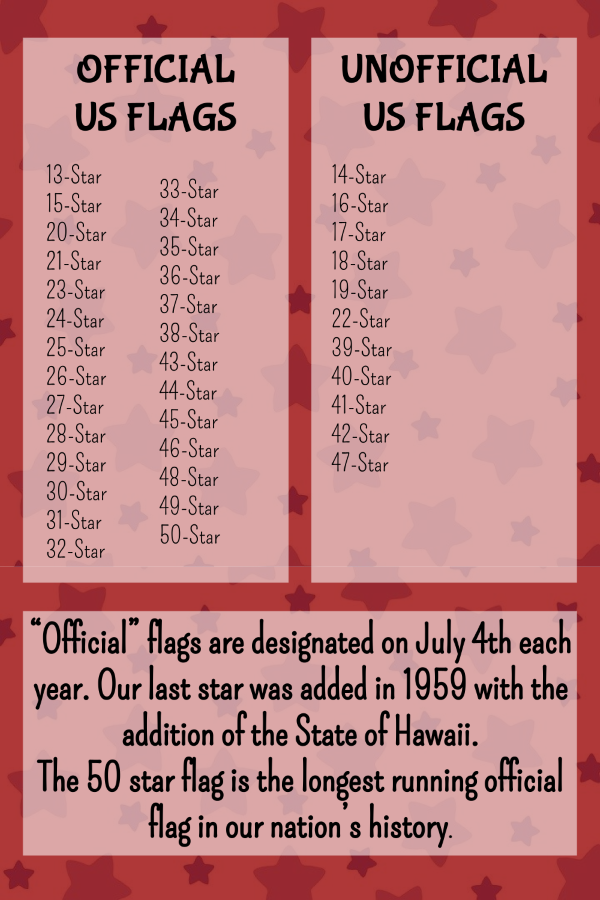
A motion to “fix the flag” at 13 stars & stripes failed at the last minute and the Flag Act of 1795 passed by a narrow margin in the House of Representatives. The new flag not only added two more stars, but it also added two additional stripes to acknowledge the new states. The 15 star flag is the only time we had an official flag with more than 13 stripes.

Key Part of American Flag History: The Star Spangled Banner
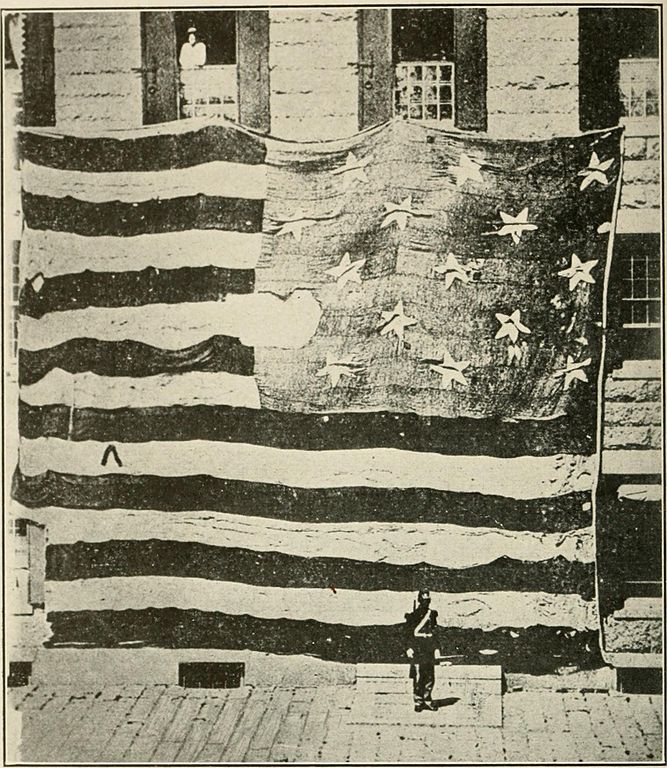
One of the most famous flags in our history is the giant flag which flew over Fort McHenry during the War of 1812. This flag was commissioned following the second Flag Act. If you’ve ever seen it at the Smithsonian Museum of American History, did you notice it has 15 stripes?! Now you know why!
It was the perseverance of this flag during the bombardment of the Fort by the British in the War of 1812 that gave rise to our National Anthem. Francis Scott Key, lawyer and poet, was on a British ship in the harbor negotiating the release of a friend from British custody as the attack was happening.
Through the smoke and debris, Key could still see “by the dawn’s early light” the “broad stripes and bright stars” of the massive flag enduring the onslaught. It inspired him to write the poem “The Defence of Fort McHenry“, which was set to the tune of a popular English song “To Anacreon in Heaven” to become our national anthem. You can listen to the mp3 file of this song from the Smithsonian. It was a hit in colonial America!
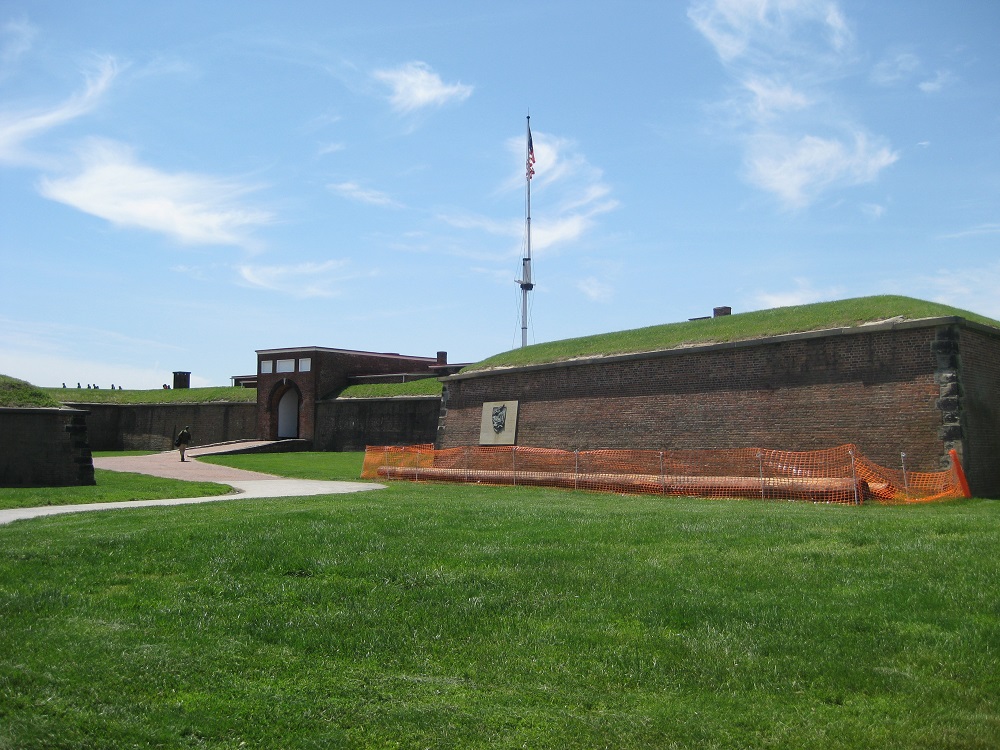


The Third Flag Act Lays Down the Rules


By 1817 there were now 20 states and an updated official flag was needed. Key’s poem and the War of 1812 had solidified the “Stars and Stripes” in our national identify, but how many stars? And how many stripes?
After much debate and multiple design proposals, the third Flag Act was passed in 1818. It designated that the flag would revert to 13 stripes to honor the original 13 colonies and that stars would be added as new states joined the Union. It also decreed that new flags would become “official” on July 4 each year to reinforce Independence Day. This is still in effect today.
Because flags would not be “official” until July 4 each year, there were times when a new star was added but, before July 4 could roll around, another state was added, so another star was added to the flag before it became official.
In terms of design, the third Flag Act did state that the stripes must be horizontal, but made no rule about the stars. For this reason, flag makers would still take artistic liberty with their star patterns. It wasn’t until President Taft signed an Executive Order in 1912 that a single design was finally mandated. This is the flag design we know today: 13 horizontal alternating red and white stripes with five-pointed white stars all in alignment with a single point oriented upwards.
The Latest Chapter of American Flag History: Every Flag has it Day
To commemorate the 150 years following the Continental Congress’ first flag legislation, President Woodrow Wilson led the first nationwide observance of Flag Day on June 14, 1917. The timing coincided with the United States having entered World War I in April of the same year, so national pride was running high.
In 1949, President Harry Truman formally designated June 14 as National Flag Day, which we still celebrate today.
Bonus: Cool Flags of History!
An American Flag exhibit ran at the Museum of the American Revolution in Philadelphia in 2021:
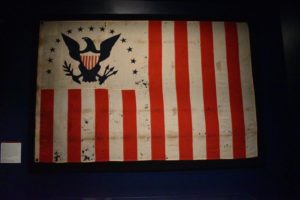
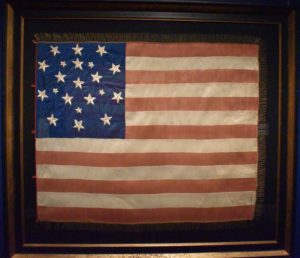

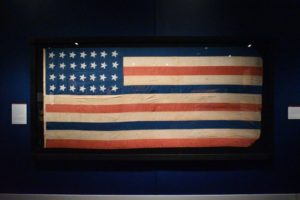
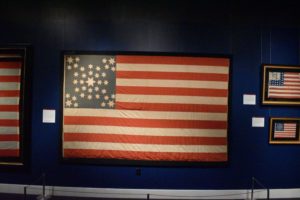
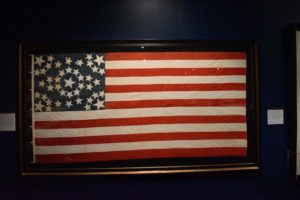

Post Sources:
[bg_collapse view=”link” color=”#4a4949″ icon=”arrow” expand_text=”Show More” collapse_text=”Show Less” ]
“A Grand Old Flag: A History of the United States through its Flags” by Kevin Keim & Peter Keim. DK Publishing, 2007. [I bought a used copy online – this is an AWESOME book!! I highly recommend it!!]
“The Stars and Stripes: The American Flag as Art and as History from the Birth of the Republic to the Present” by Boleslaw and Marie-Louise D’Otrange Mastai. Alfred A. Knopf publishing, 1973. [I also bought a used copy of this online. It’s a fantastic collection of pictures of historic flags and all kinds of patriotic paraphernalia.]
[/bg_collapse]

